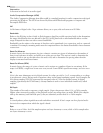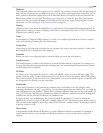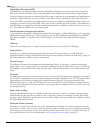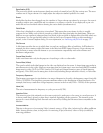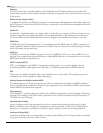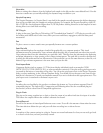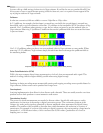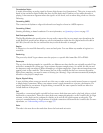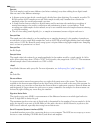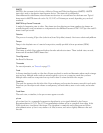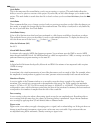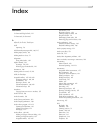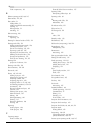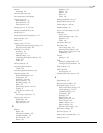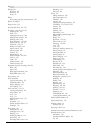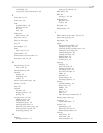
386
GLOSSARY APPENDIX B
Sample
The word sample is used in many different (and often confusing) ways when talking about digital sound.
Here are some of the different meanings:
• A discrete point in time which a sound signal is divided into when digitizing. For example, an audio CD-
ROM contains 44,100 samples per second. Each sample is really only a number that contains the
amplitude value of a waveform measured over time.
• A sound that has been recorded in a digital format; used by musicians who make short recordings of
musical instruments to be used for composition and performance of music or sound effects. These
recordings are called samples. In this manual, we try to use sound file instead of sample whenever referring
to a digital recording.
• The act of recording sound digitally (i.e., to sample an instrument) means to digitize and store it.
Sample Rate
The sample rate (also referred to as the sampling rate or sampling frequency) is the number of samples per
second used to store a sound. High sample rates, such as 44,100 Hz provide higher fidelity than lower sample
rates, such as 11,025 Hz. However, more storage space is required when using higher sample rates. Sampling
rate is to time as quantization is to level.
Sample Size
See Bit Depth.
Sample Value
The sample value (also referred to as sample amplitude) is the number stored by a single sample. In 16-bit
audio, these values range from -32768 to 32767. In 8-bit audio, they range from -128 to 127. The maximum
allowed sample value is often referred to as 100% or 0 dB.
.sfap0
Sony Media Software audio proxy file. For more information, see Audio proxy files (.sfap0) on page 371.
.sfk
See Peak File.
Shortcut Menu
A context-sensitive menu that appears when you right-click certain areas of the screen. The functions
available in the shortcut menu depend on the object being clicked on as well as the state of the program. As
with any menu, you can select an item from the shortcut menu to perform an operation. Shortcut menus are
used frequently in Vegas software for quick access to many commands. An example of a shortcut menu can
be found by right-clicking any event along the timeline.
Signal-to-Noise Ratio
The signal-to-noise ratio (SNR) is a measurement of the difference between a recorded signal and noise
levels. A high SNR is always the goal.
The maximum signal-to-noise ratio of digital audio is determined by the number of bits per sample. In 16-bit
audio, the signal to noise ratio is 96 dB, while in 8-bit audio, the ratio is 48 dB. However, in practice, this
SNR is never achieved, especially when using low-end electronics.
Small Computer Systems Interface (SCSI)
A standard interface protocol for connecting devices to your computer. The SCSI bus can accept up to seven
devices at a time including CD-ROM drives, hard drives and samplers.



